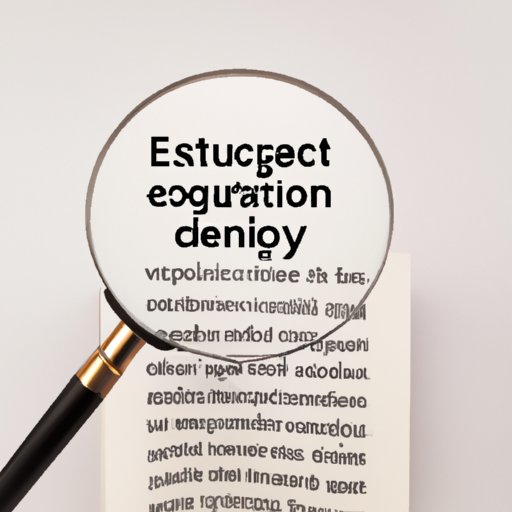
Introduction
Constructivism is a learning theory that has been gaining popularity in recent years. Despite its popularity, many people still struggle to understand what it entails and how it relates to education. In this article, we will explore constructivism in education and provide a beginner’s guide to understanding its role. We will discuss the key principles, teaching methods, benefits, and challenges of implementing constructivist practices in the classroom.
Constructivism 101: A Beginner’s Guide to Understanding its Role in Education
Constructivism is a learning theory that emerged in the 20th century. It suggests that individuals construct their own knowledge based on their experiences and interactions with the world around them. This theory emphasizes that learning is an active process, where learners build their own understanding by reflecting on their experiences.
In education, constructivism emphasizes the importance of hands-on experiences to facilitate learning. The goal is for students to construct their own understanding of concepts rather than simply memorizing information. This means that learning is student-centered, with the teacher acting as a guide rather than an authority figure.
Some examples of constructivist teaching methods include:
– Project-based learning
– Inquiry-based learning
– Collaborative learning
– Student-directed learning
Breaking Down Constructivism: How This Learning Theory Impacts the Way We Teach and Learn
Constructivism is based on several key principles that impact the way we teach and learn. These include:
– Active engagement: Learning is an active process that requires engagement with the material.
– Constructing meaning: Students construct their own understanding of concepts based on their experiences.
– Social interaction: Collaboration and interaction with others is critical to learning.
– Reflective thinking: Learners reflect on their experiences to develop their understanding.
In constructivist learning, both the teacher and the student play active roles in the learning process. The teacher acts as a facilitator, providing guidance and support as students construct their own understanding. The learner takes ownership of their learning by reflecting on their experiences and applying their understanding to new situations.
Collaboration and social interaction are essential to constructivism. Students work in groups to solve problems, discuss ideas, and share their knowledge with others. This fosters an environment of active learning, where students develop their own understanding by participating in class discussions and group activities.
Constructivism and Education: The Power of Learning by Doing and Creating
Constructivism emphasizes the importance of hands-on, experiential learning. This approach is based on the belief that students learn best by doing and creating. Instead of simply memorizing information, students are encouraged to actively engage with the material.
Some examples of constructivist activities and projects include:
– Building models and prototypes
– Conducting experiments and investigations
– Creating multimedia presentations and projects
– Engaging in simulations and games
Constructivism also fosters creativity and innovation. Because students are encouraged to construct their own understanding, they are free to explore new ideas and concepts. This approach allows for a more diverse range of perspectives and solutions to problems.
The Benefits and Challenges of Implementing Constructivist Teaching Methods in the Classroom
Implementing constructivist teaching methods can have several benefits. For example, it can increase student engagement and understanding. Because students are actively participating in the learning process, they are more likely to remember the material and apply it to new situations.
However, implementing constructivist teaching methods can be challenging. It requires extensive preparation and planning, as well as a willingness to adapt to student needs and interests. Additionally, some students and parents may resist this approach, as it requires a significant shift in teaching practices.
Constructivism vs. Traditional Teaching Methods: Exploring the Differences and What They Mean for Students
Traditional teaching methods often focus on the transmission of knowledge from teacher to student. Students are expected to memorize information and then repeat it on tests. This approach does not emphasize critical thinking, creativity, or problem-solving skills.
In contrast, constructivism emphasizes the importance of students constructing their own understanding of concepts. It promotes active engagement, collaboration, and social interaction. This approach leads to a deeper understanding of concepts and fosters critical thinking and problem-solving skills.
The impact of these differences on student learning and development can be significant. Students who learn through constructivist methods are more likely to develop a love of learning and a sense of ownership over their education. They are also better prepared for the demands of the 21st century workplace, which requires creativity, collaboration, and problem-solving skills.
Conclusion
In conclusion, constructivism is a learning theory that emphasizes the importance of hands-on, experiential learning. It promotes active engagement, collaboration, and social interaction as essential components of the learning process. While implementing constructivist teaching methods can be challenging, the benefits to student engagement and understanding are significant. Educators are encouraged to explore these methods and adapt them to the needs and interests of their students. With constructivism, students are empowered to take ownership of their own learning and develop the critical thinking and problem-solving skills needed to succeed in the 21st century.





